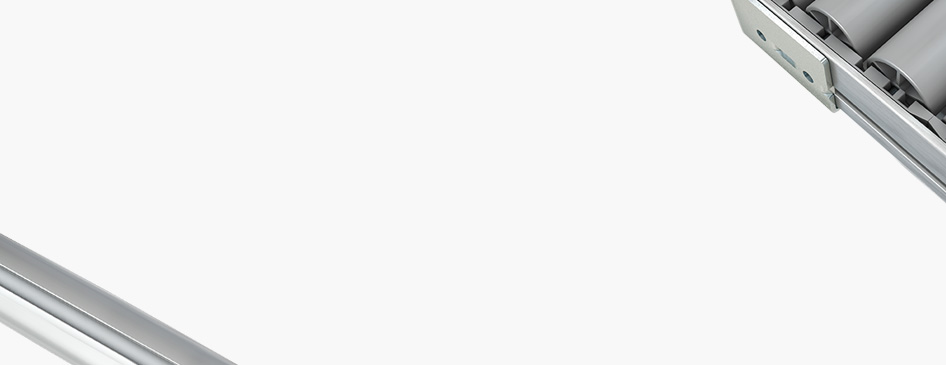
Seleccione uno
o más idiomas
0,1,3
- Alemán
- Inglés
- Chino
- Español
Acero de refuerzo
El acero de refuerzo o acero para concreto se usa para reforzar componentes de concreto que estén sujetos a altas cargas. El acero es incrustado en el concreto de manera que el concreto pueda soportar los esfuerzos tanto de tensión así como de compresión.
Para mejorar la unión del material, se enrollan perfiles en forma de costilla en el acero de refuerzo para optimizar la transmisión de fuerzas. Torcer el acero estructural también lo hace más fuerte, lo que mejora la resistencia a la fractura (acero corrugado).
Los aceros para concreto son normalmente y , y tienen una estructura de veta fina. Los puntos de fluencia son ajustados al controlar la temperatura durante el y al usar endurecimiento a la deformación. Hay disponible todo tipo de aceros para concreto, desde estándares hasta de alta ductilidad.
La piedra de cemento alcalina del concreto protege al acero contra la corrosión en un grado limitado mediante la pasivación. Sin embargo, los aceros para concreto con protección contra la corrosión (galvanizado en caliente o con recubrimiento epóxico) están también disponibles para aplicaciones especiales como el uso en agua salada.
Los aceros de refuerzo se usan en forma de
Varillas de acero,
Malla de acero soldada,
Anillos de acero y
Alambre de refuerzo.
Una forma especial de acero para concreto es el acero pretensado, el cual es tensado antes de su incorporación en el concreto para hacer más fuerte al componente. En construcciones de edificios (y en construcciones de puentes), por otro lado, el tensado con lechado subsecuente normalmente se lleva a cabo después de fraguado del concreto.
En ambos casos, el pretensado a compresión se genera en el concreto para prevenir es que sea sometido a esfuerzos de tensión durante el uso. En un escenario ideal, el pretensado a compresión se reduce a cero bajo una carga externa.
Bewehrungsstahl
Bewehrungsstahl oder Betonstahl dient zur Bewehrung von belasteten Betonbauteilen. Der Stahl wird dabei in den Beton einbetoniert. Durch die Einarbeitung des Stahles ist der ansonsten lediglich auf Druck belastbare Beton auch auf Zug belastbar.
Um einen besseren Materialverbund zu erreichen, werden dem Bewehrungsstahl Profile in Form von Rippen zur optimierten Kraftübertragung aufgewalzt. Festigkeitssteigernd wirkt zudem eine Torsion des Baustahls. Dies verleiht ihm eine höhere Dauerschwingfestigkeit (Rippentorstahl).
Betonstähle sind regelmäßig schweiß- und kaltumformbar und haben ein feinkörniges Gefüge. Streck- und Fließgrenzen werden durch die Temperaturführung beim Walzen und durch Kaltverfestigung eingestellt. Unterschieden werden normal bis hochduktile Betonstähle.
Der alkalische Zementstein des Betons schützt den Stahl zwar vor Korrosion durch Passivierung in begrenztem Umfang. Für besondere Einsatzzwecke, etwa beim Einsatz in Salzwasser, werden Betonstähle jedoch auch mit Korrosionsschutz (feuerverzinkt oder epoxidbeschichtet) angeboten.
Verwendet werden Bewehrungsstähle in Form von
- Stahlstäben,
- geschweißten Stahlgittermatten,
- Stahlringen und
- Bewehrungsdrähten.
Eine Sonderform des Betonstahls ist Spannbetonstahl, der vor dem Einbau des Betons gespannt wird, um eine höhere Festigkeit des Bauteils zu gewährleisten. Auf Baustellen (wie beim Brückenbau) erfolgt dagegen das Spannen mit anschließender Verpressung in der Regel nach dem Aushärten des Betons.
In beiden Fällen werden Druck-Vorspannungen im Beton erzeugt, um zu vermeiden, dass dieser im Betrieb auf Zug beansprucht wird. Vielmehr reduziert sich dann bei äußerer Belastung die Druck-Vorspannung im Idealfall auf Null.
Reinforcing steel
Reinforcing Steel or Concrete steel is used to reinforce concrete components that are subject to high loads. The steel is embedded in concrete so that the concrete can withstand tensile as well as compressive stresses.
To improve the Material bond, profiles in the form of ribs are rolled onto the reinforcing steel for optimised transmission of forces. Twisting Structural steel also makes it stronger, which improves its fatigue Strength (twisted ribbed steel).
Concrete steels are normally weldable and cold-formable and have a fine-grained structure. Yield points are adjusted by controlling the temperature during Rolling and by using strain Hardening. Everything from Standard to highly ductile concrete steels are available.
The concrete's alkaline Cement stone protects the steel against Corrosion to a limited extent through passivation. However, concrete steels with corrosion protection (hot-dip galvanised or epoxy-coated) are also available for special applications such as use in salt water.
Reinforcing steels are used in the form of
- steel bars,
- welded steel mesh,
- steel rings and
- reinforcing wires.
One special form of concrete steel is prestressing steel, which is stressed before incorporating the concrete to make the component stronger. On building sites (and in bridge-building), on the other hand, stressing with subsequent grouting normally takes place after the concrete has set.
In both cases, compressive prestresses are generated in the concrete to prevent it being subjected to tensile stresses during use. In the ideal-case scenario, the compressive prestress is reduced to zero under an external load.
钢筋
钢筋或劲性钢筋用于加固承受高载荷的混凝土构件。在混凝土中加入钢,使得混凝土可承受更高的拉伸应力和压缩应力。
为了改善材料的粘结力,钢筋的表面轧制成有间隔的肋条,以优化力的分布。扭转结构钢也增强了粘结力,从而提高了疲劳强度(扭带肋钢筋)。
劲性钢筋通常可被焊接和冷成型,具有细晶粒结构。通过控制轧制过程中的温度并采用应变硬化,调整其屈服点。从标准劲性钢筋到高延性劲性钢筋,可分为不同等级。
混凝土的碱性水泥石通过钝化作用,在很大的程度上保护了钢不受腐蚀。然而,耐腐蚀的劲性钢筋(热浸镀锌或环氧涂层)也可用于特殊应用,如在海水中使用。
钢筋的使用形式包括:
钢条,
焊接钢网,
钢环和
钢丝。
一种特殊形式的劲性钢筋为预应力钢,在未加入混凝土前就被预加应力,以增加构件强度。另一方面,在建筑工地上(和在造桥工程中),通常在混凝土凝固后才对劲性钢筋预加应力并随后灌浆。
在这两种情况下,在混凝土中积聚压缩预应力,以防止其在使用期间受到拉伸应力。在理想的情况下,压缩预应力在外部负荷下减少为零。
